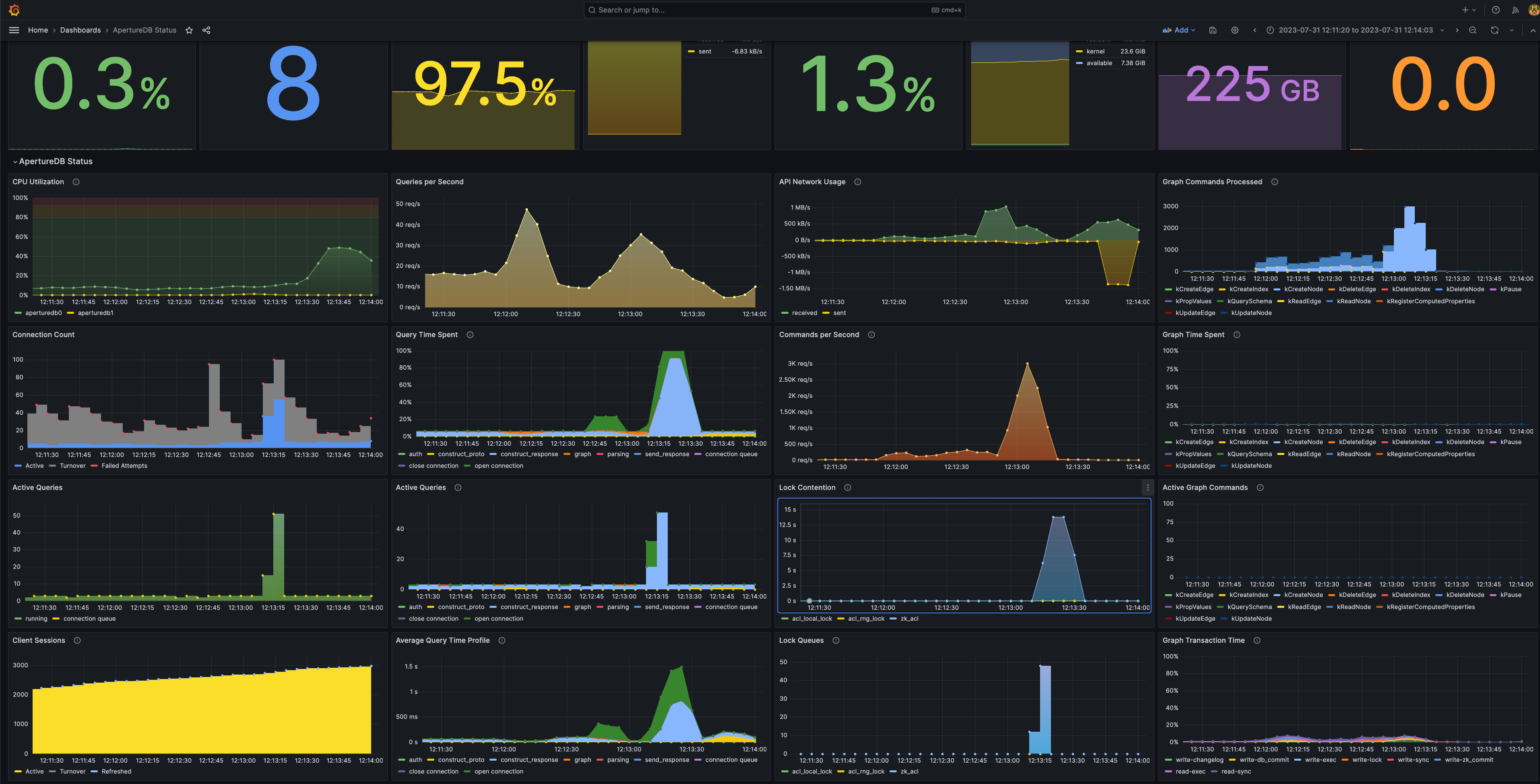Enterprise Features
Monitoring and Logging
Each ApertureDB deployment automatically collects telemetry data about how the service is operating. Users can easily observe the health of their system using ApertureDB's included Grafana visiblity front-end, or by integrating it into their own serviceability stack.

Encrypted Communication
Communication with ApertureDB is end-to-end encrypted by default using SSL.
Role-Based Access Control
ApertureDB users must authenticate to access data, and access is provided according to the user's assigned roles.
ApertureDB administrators are empowered to create users and assign roles.
Governance and Lineage Tracking
The ability to store "all types of data" and augment on-the-fly also means that users don't need to create copies on local machines or other cloud buckets since ApertureDB can be the single source of truth, thus making data governance a lot more manageable.
As we have covered earlier, ApertureDB has a graph database internally to support metadata derived from multimodal data and application. This graph database also makes it quite feasible to add information about copies of various data types created by different users as entities in this graph, and connect them to the original data from which the new versions are derived to track lineage.